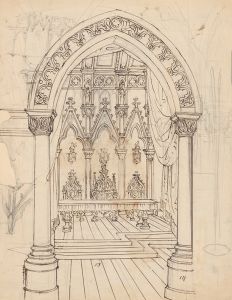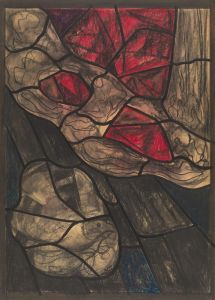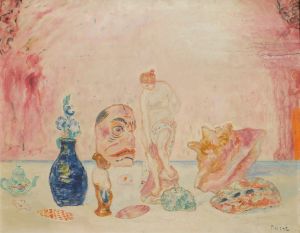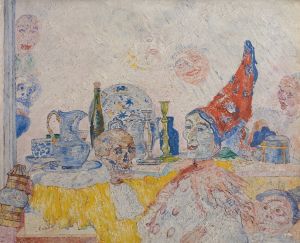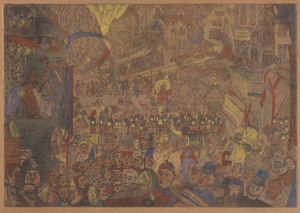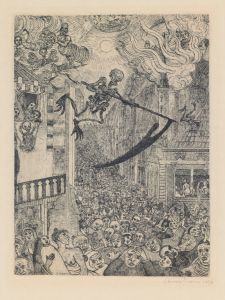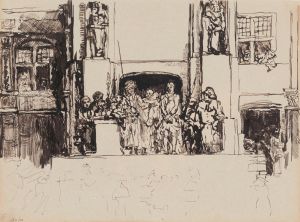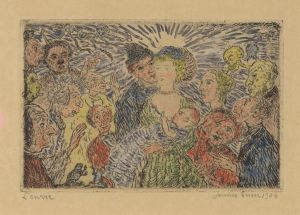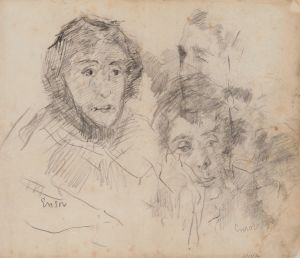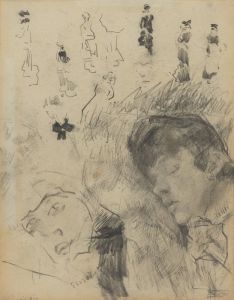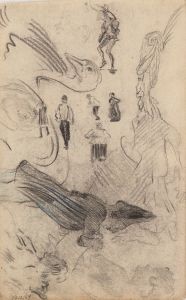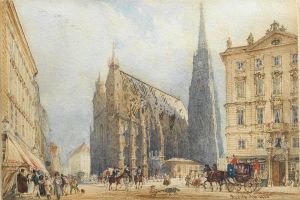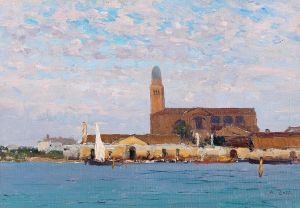
The Cathedral
A hand-painted replica of James Ensor’s masterpiece The Cathedral, meticulously crafted by professional artists to capture the true essence of the original. Each piece is created with museum-quality canvas and rare mineral pigments, carefully painted by experienced artists with delicate brushstrokes and rich, layered colors to perfectly recreate the texture of the original artwork. Unlike machine-printed reproductions, this hand-painted version brings the painting to life, infused with the artist’s emotions and skill in every stroke. Whether for personal collection or home decoration, it instantly elevates the artistic atmosphere of any space.
James Ensor's painting "The Cathedral" is an intriguing work by the Belgian artist, known for his unique style that blends elements of symbolism, expressionism, and surrealism. Ensor, who lived from 1860 to 1949, was a prominent figure in the Belgian avant-garde movement and is often celebrated for his innovative use of color and his exploration of themes related to society, religion, and the human condition.
"The Cathedral," created in 1886, is one of Ensor's notable works that exemplifies his fascination with religious architecture and the interplay between light and shadow. The painting depicts a grand cathedral, rendered with a sense of awe and reverence, highlighting Ensor's interest in the spiritual and the monumental. The structure dominates the composition, towering over the surrounding environment and drawing the viewer's eye upward, emphasizing its grandeur and the intricate details of its architecture.
Ensor's technique in "The Cathedral" reflects his mastery of light and color. He employs a vibrant palette, using bold and contrasting colors to create a dynamic and almost otherworldly atmosphere. The use of light in the painting is particularly striking, as it seems to emanate from within the cathedral itself, casting an ethereal glow that enhances the spiritual quality of the scene. This treatment of light and color is characteristic of Ensor's work, where he often sought to convey emotional depth and complexity through his use of visual elements.
The painting also reflects Ensor's critical perspective on organized religion and societal norms. While "The Cathedral" can be seen as a celebration of religious architecture, it may also be interpreted as a commentary on the power and influence of religious institutions. Ensor's work frequently includes satirical elements, and his depiction of the cathedral could be seen as both a tribute to and a critique of the role of religion in society.
Ensor's background and personal experiences significantly influenced his artistic vision. Born in Ostend, Belgium, he spent much of his life in this coastal city, which provided inspiration for many of his works. His upbringing in a family of shopkeepers, along with his exposure to the diverse cultural influences of Ostend, shaped his perspective and fueled his interest in exploring themes of identity, tradition, and modernity.
"The Cathedral" is part of Ensor's broader body of work that challenges conventional artistic norms and explores the complexities of human experience. His innovative approach and willingness to push boundaries have left a lasting impact on the art world, influencing subsequent generations of artists and contributing to the development of modern art movements.
Overall, "The Cathedral" stands as a testament to James Ensor's artistic genius and his ability to capture the multifaceted nature of the world around him. Through his use of color, light, and composition, Ensor invites viewers to contemplate the spiritual and societal dimensions of his work, making "The Cathedral" a compelling piece that continues to resonate with audiences today.





